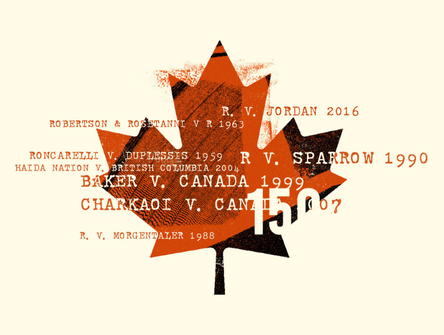Lawyers versus Convoy
Who better than legal professionals to protect the rights of residents, business owners and essential workers?

It’s not every day that lawyers play the part of heroes, but in the case of the three-week occupation of Canada’s capital, four of them could claim that title. If, that is, their work left them enough time to sit, breathe, and take stock of what they’ve accomplished so far.
Watching the protest and blockades on television gave viewers a good sense of the chaos and mayhem residents of downtown Ottawa had to endure. But it was missing the smell of diesel, the shuttered businesses and the sound of air horns blaring outside windows day and night.
Like thousands of central Ottawa residents, lawyers Paul Champ, Emilie Taman, Christine Johnson and Bijon Roy, of Champ & Associates, had enough. When 21-year-old public servant Zexi Li agreed to become lead plaintiff in a class-action lawsuit against the organizers of the convoy and occupation, they dropped everything and worked non-stop for 15 days and many late nights getting their case organized.
“We have daily meetings, sometimes multiple, to juggle all the issues that were coming at us, fast and furious,” Champ explains. “It’s a whirlwind!”
The firm decided on February 3 to move forward with the case. The first order of business was to get a 10-day injunction to prevent trucks from honking their horns, which a judge granted on Feb. 7. The order was extended for another 60 days before police put an end to the occupation and trucks were removed from the downtown core during the Family Day long weekend. Convoy leaders Tamara Lich and Pat King were among the nearly 200 people arrested. They were both denied bail.
Bijon Roy was in charge of marshalling evidence for the motions and other materials the legal team had to put together in record time. Once word of the class-action lawsuit got out in the community, residents eagerly recorded what they witnessed. Roy sifted through that evidence, in addition to the videos and public messages from convoy organizers all over the internet.
“I’ve watched a lot of videos of characters like Pat King,” Roy says. “You know, they’re not always discreet about what they’re up to. When you’re looking at it from a legal perspective, you kind of end up just wanting to watch more and more of it, because you keep hoping you’re going to find more juicy quotes and statements that we would consider to be admissions.”
For Christine Johnson, whose life as a downtown resident was impacted by the convoy, being able to do something about it was a welcome development. “For me, anyways,” she says, “it was very empowering.”
Johnson’s role was to help collect and organize the evidence, and then prepare the legal materials. Everything from drafting affidavits to putting together a factum or written arguments.
The team also worked with Lenczner Slaght to obtain a Mareva injunction to freeze millions of dollars wroth of assets linked to the convoy, including bank accounts and crypto currency.
“A lof of people perceive the work that we do as lawyers as very dry and transactional,” Emilie Taman says. This case will definitely change that perception for the people of Ottawa.
For all that, Taman adds, the team was always conscious not to undermine the right to protest in a democracy like Canada. Their work “really looked at ways in which this is different from a lawful protest, and focusing on some of the particular harms,” such as noise levels, lost revenues and so on.
The case is far from over but at least now the pace is such that the lawyers can resume working on their other files. Still, the whirlwind experience was heart-warming. It confirmed something they already knew, Taman says, “that this is a community that has a really strong sense of solidarity and mutual support.”
“You could almost describe this as a grassroots class action,” Champ adds. “We’ve had so many people from the community reach out to help us.” Including their colleagues in the legal community.
“I think we’ve heard from almost practically every law firm in the city with a note of thanks, and in some cases, some assistance,” which included cooperation on files that had to be adjourned.
But in the end what pleases the legal team the most is the outpouring of support in the community for their client, lead plaintiff Li. “I think it has really outweighed the negative kind of more toxic stuff, at least from my perspective,” Taman says.


